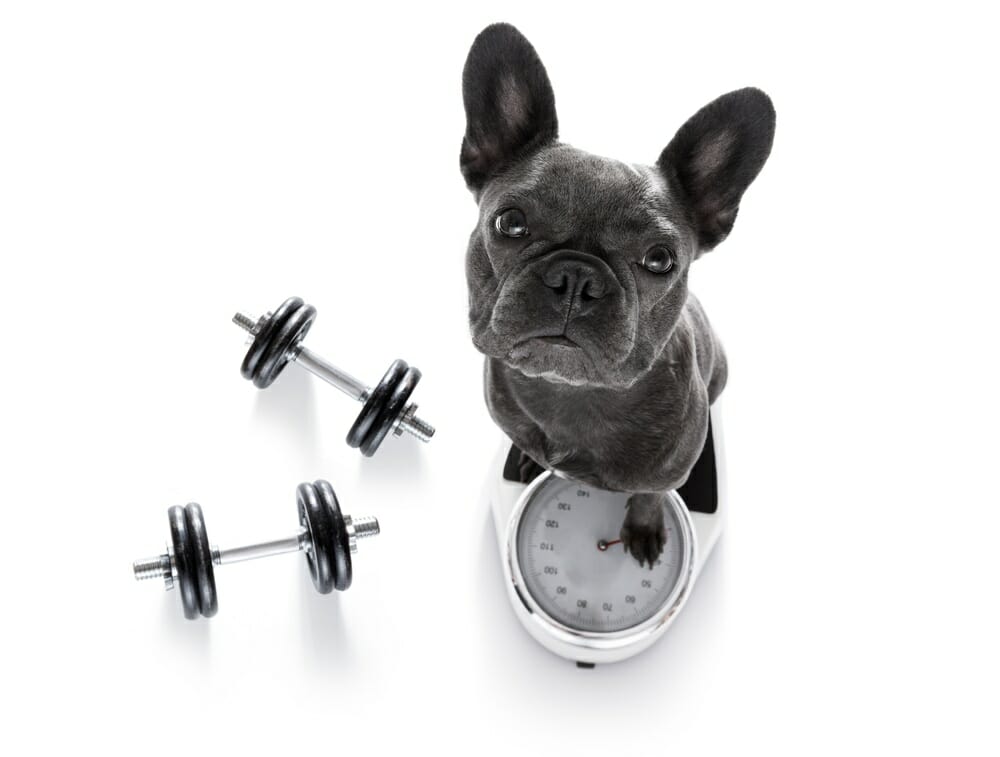If you’re wondering how to help your dog lose weight, you’re not alone. Pet obesity is a growing yet preventable problem in America.
Surveys from the Association for Pet Obesity Prevention (APOP) show that more than half of dogs in the United States are overweight or obese.
Pet population projections from 2018-19 showed that an estimated 50 million dogs were too heavy. Diagnosis of obesity among dogs was in epic proportions before the pandemic, and Covid-19 has only exacerbated the problem as our behavior and the way we care for our pets has changed.
While a few extra pounds may not seem like a big deal, obesity can lead to several health risks and shorten the lifespan of your pet. There are significant lifespan differences between dogs of normal weight and overweight dogs across all breeds.
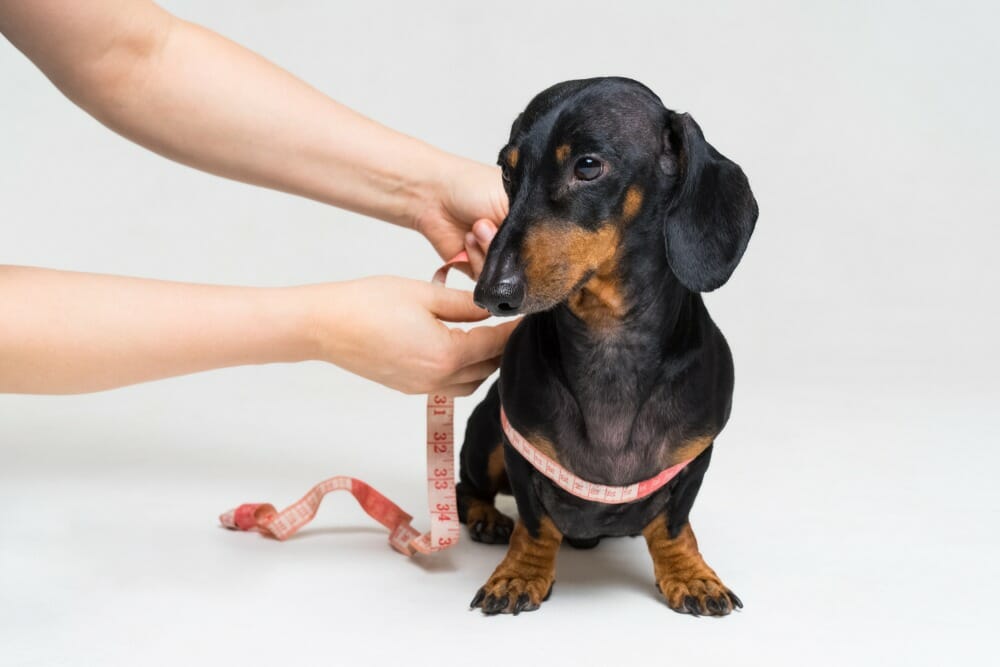
Overweight dogs are more likely to suffer from severe conditions like diabetes, respiratory problems, and arthritis. As a responsible pet parent, it’s your job to ensure your dog stays in shape so they can live a long life with minimal risk of developing health problems.
How Can I Get My Dog to Lose Weight?
You’re taking the very first step by asking about weight loss for dogs and researching how to help your dog lose weight. Let’s explore some effective ways to get a dog to lose weight to improve and extend your life together.
Reduce Calorie Intake
Just like humans, dogs can gain excess weight by eating too many calories, and that generally comes down to portion size. The first step is controlling food intake.
You can help your dog start losing pounds at a regular and healthy pace by reducing and controlling the number of calories they consume. Feeding high-calorie foods, table scraps, or treats is one of the causes of the current pet obesity epidemic.
Your dog probably needs less food than you think. Most food bags have feeding guidelines that should be strictly adhered to. Your dog requires no extra portions or snacks to get the required calorie intake for the day.
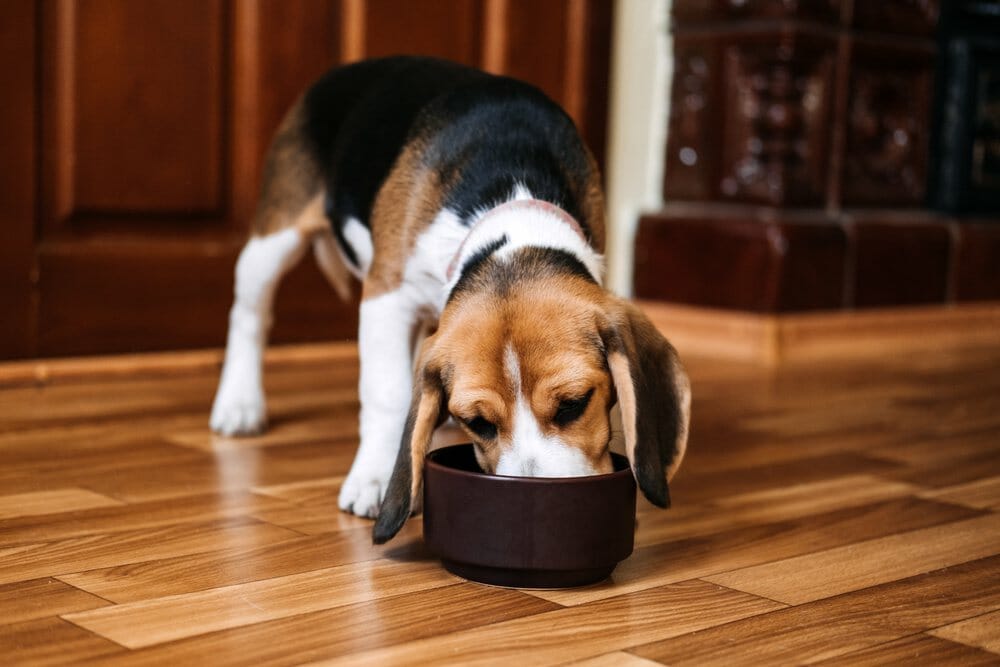
Don’t guess how much food you’re giving your dog. Consider using a measuring cup for precise portioning. Reducing and measuring the amount of food you provide can help your dog lose some extra pounds without the need for drastic measures.
A vet or online dog calorie calculator can help you figure out how many calories your dog needs to consume. Spot & Tango does that for you, if you use our meal planner feature.
If your pup loves table scraps, they’re probably taking in more calories than you realize.
Give Protein Rich Food with Fewer Carbs
If you feed your dog low-quality commercial dog food, packed with fillers and preservatives, you may be leaving your dog empty of calories and insufficient energy. Fillers are notorious for increasing calorie count and doing little for nutrition.
A low carb, high protein diet is most suitable. Dogs shouldn’t live on diets high in carbohydrates. Your dog will likely gain extra weight if you give them too many carbs.
Switching to a protein-rich dog diet is a crucial step for weight loss for dogs. It will help your dog build lean muscle instead of forcing their body to convert carbs into fat.
Spot & Tango offers personalized meals designed by veterinary nutritionists to ensure your dog gets a balanced and complete meal, cooked in USDA-certified kitchens. You can find a range of wet fresh recipes and dry UnKibble formulated with weight loss, constipation, or sensitive stomachs in mind.
Take Spot & Tango’s Beef & Barley UnKibble, for example. It contains just the right amount of healthy protein and is low in carbs to promote weight loss for dogs. The high protein content will help build muscle, and the meal is low in carbohydrates – a non-essential component of a healthy diet for most dogs.
Protein quality is more vital than quantity. One of the ingredients used is the finest quality USDA-certified beef that’s guaranteed to protect your dog against muscle loss while giving them an energy boost. Spot & Tango is your best bet for high protein, nutrient-dense food, personalized to your dog’s weight loss needs.
Reduce Unhealthy Treats
Every dog owner loves to see their pup’s face light up when they offer them a treat. However, if you get too liberal with the treats, you may end up causing your dog to gain weight over time.
Reducing the number of unhealthy treats, you give your dog is a good starting point to help your dog lose weight. You can cut back on calories by reducing the number of treats you give at a time.
You can also try replacing high-fat treats like cheese or biscuits with healthier and nutritious options, like freshly chopped apples, carrots, or green beans, without any additives.
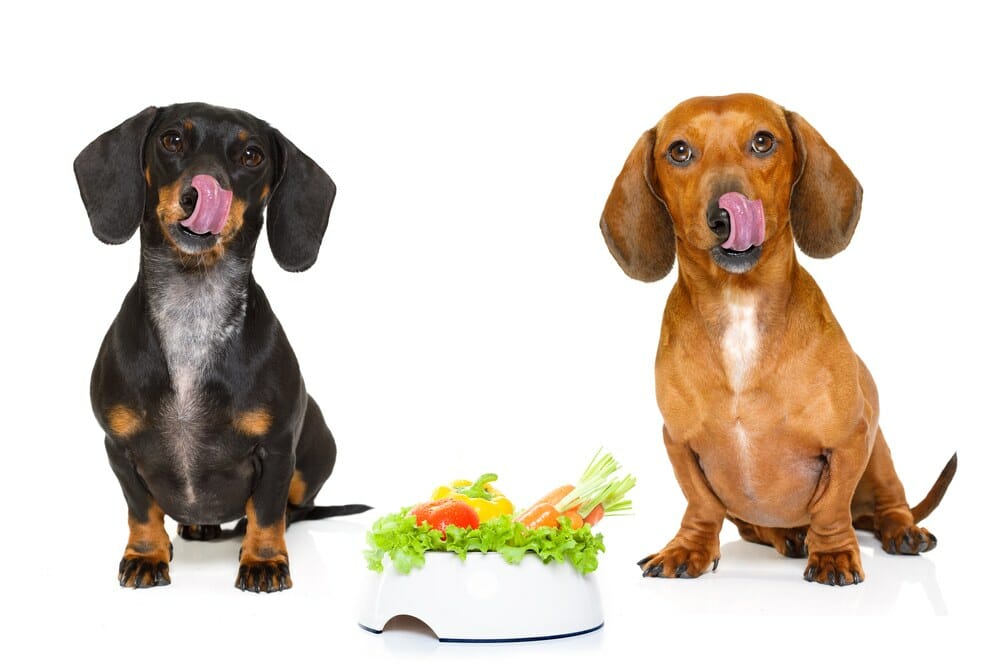
Remember, food doesn’t equate to love, so don’t let your pet associate food with affection. Giving your dog too much food, to the point of obesity, will only shorten the time you have together despite your good intentions. Using food as a training reward is fine but go for high protein treats that can be divided into smaller pieces to avoid overfeeding.
Ensure you only give a treat when your dog earns it and slowly replace food treats with non-food rewards. You can substitute food with fun activities like fetching or belly rubs as rewards. Don’t forget to inform family members, pet walkers, or sitters about limiting unhealthy treats.
Do Lots of Exercises
You may feel like it’s a chore to exercise, but for your dog, it’s nothing but fun. Doing lots of exercise with your furry friend will not only help them lose weight, but it will also keep their mind active. Most dogs love to go for hikes, walks, swims, or runs, so don’t forget to take your pup outside and participate in some fun activities with them.
Strive to get at least fifteen minutes of strenuous activity with your dog daily. Although dog aerobics classes exist, it doesn’t have to be that complicated. You can still get your dog into shape by simply increasing the pace during your walks.
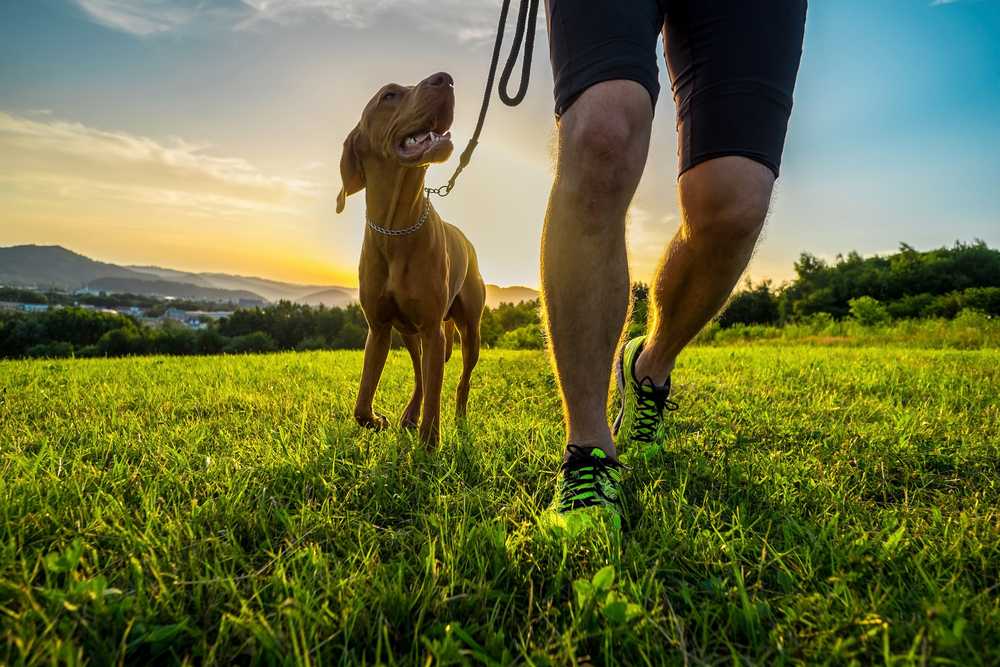
For an overweight or obese dog, starting slowly while gradually increasing the activity levels is recommended. It can be as simple as extending your walks by a few blocks and as you both become fit, increasing the pace and distance. Make exercise fun through canine sports, which provide an excellent opportunity to bond with your dog.
While exercising, remain vigilant of how your dog acts or looks. Stop or slow down if your dog is panting excessively and find relief in a shaded or cool spot. Dogs from any breed can overheat, so remember not to overdo it. On scorching days, you can opt for indoor games or early morning and late-night walks.
Take it Slow
How long does it take for a dog to lose weight? There’s no straightforward answer because every dog is unique, and factors like age will affect the duration required for weight loss. Because weight gain doesn’t happen overnight, weight loss won’t either.
It may take a few months for your dog to reach an ideal weight, and if their obesity is extreme, more attention and time will be needed. There are no quick fixes or magic pills, and consistency and time are required.
For the most positive impact, habitual, gradual changes are recommended. You can make simple lifestyle changes by integrating exercise and a healthy dog diet into their daily routine.
Frequently Asked Questions
How Can I Help A Small Dog Lose Weight?
While very young puppies don’t need any calorie reductions, adolescents that get fat could benefit from some diet tips. When young or small dogs are obese, a vet’s supervision is required. They may put your dog on a special therapeutic diet for weight loss.
Therapeutic foods increase the dietary protein for small dogs to help them burn fat. Other foods your vet may recommend are designed to enhance the body’s regulation of natural insulin levels, to ensure calories are burned more readily instead of being stored as fat.
While overweight adult dogs do well with reduced calories foods, such diets aren’t always suitable for young pups, and it’s essential to clear any diet changes with your veterinarian.
You can also adjust the feeding schedule of your small dog by dividing what would normally be a single meal into multiple meals. This will help increase the metabolic rate of their body, enabling more calories to burn faster.
Exercise is also vital in helping your small dog shed some pounds. Begin slowly and adjust to your dog’s activity level.
How Can I Help A Senior Dog Lose Weight?
As all animals get older, their bodies lose shape. They exercise less and rest more, which is especially true for dogs. The first step to helping your senior dog lose weight involves taking control of its diet. If you fill your dog’s bowl and allow unrestricted access, you may be contributing to the problem.
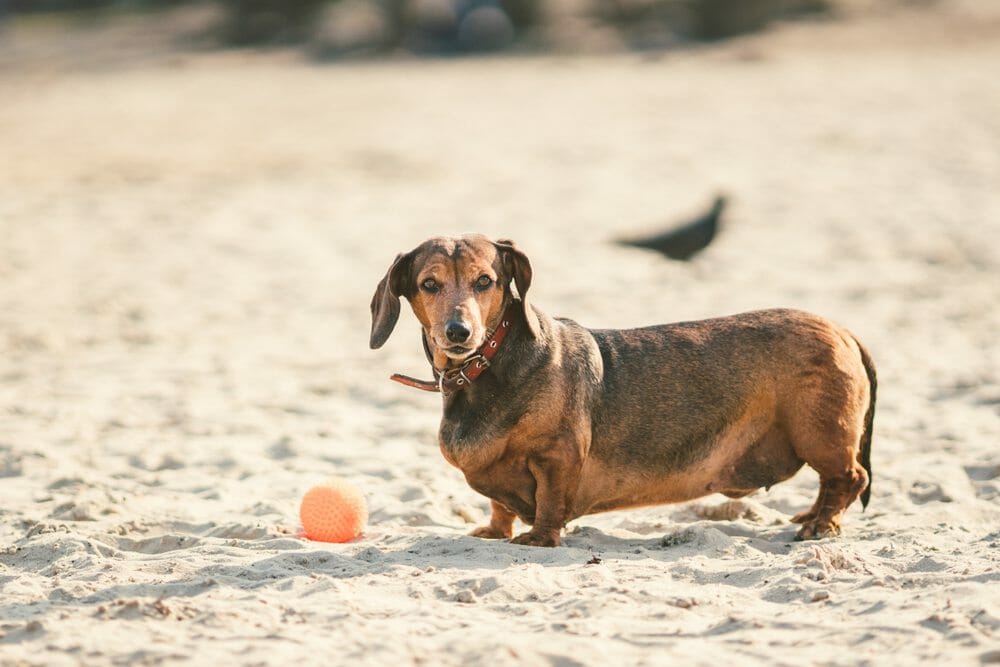
Portion control and a good quality diet can help your senior dog live a healthier life. Your vet can help you choose a suitable diet to reduce or maintain weight. Although they’ll tire out more quickly than they did before, it’s not an excuse not to exercise your senior dog.
It’s essential to consult your vet before engaging your senior dog in any exercise. Rigorous exercise can harm a senior dog who may be more prone to joint or heart issues. Move at a pace that’s comfortable for your dog, starting slowly and building pace as you progress.
How Can I Help My Obese Dog Lose Weight?
Helping your obese dog lose weight is all about controlling or limiting their calorie intake, changing their diet, reducing unhealthy treats, and doing lots of exercise.
You have to account for the required activity level for your dog. Some dogs are more active than others, and you have to be dedicated to taking them out for lengthy walks or activities.
If you’re not providing your dog with enough physical stimulation, the quickest way to help your obese dog lose weight can be to increase activity levels.
Take advantage of dogs’ incredibly playful nature. Fetch games are suitable for hunting breeds, and puzzle toys that stimulate the senses are suitable for scent-tracking dogs. You’ll have more chances of achieving a weight loss objective if your dog is engaged in the chosen activity.
What Are the Causes of Dog Obesity?
Genetics
Some dogs are genetically predisposed to being overweight, including the bulldog, basset hound, pug, dachshund, and golden retriever.
Overeating
Overeating is a major cause of obesity in dogs. Pet parents tend to feed their dogs significantly more than necessary.
Low Metabolism
A reduced metabolism can be a result of a malfunctioning thyroid gland, which can cause your pet to gain weight or decrease its activity levels. Other symptoms include constipation and aggressiveness.
Trauma
Mental or physical trauma can stress your dog, and just like people, they can try to cope by overeating. Other symptoms can include aggression, withdrawal, excessive vocalization, or shaking.
Inactivity
Dogs that spend their days lounging in the backyard or the house will quickly become overweight. Dogs are meant to run and jump for several hours a day, and even those who take their dogs out for walks are unlikely to reach the required activity levels.
Conclusion
With the above steps, you no longer have to wonder how to help your dog lose weight. Weight loss is all about calories in and calories out, which applies to all animals, including dogs.
When your dog eats more calories than they’re burning, the excess calories are stored in the body as fat.
While animals once used their stored fat to survive in periods of food scarcity, there are no scarcities anymore, and food is available all year round.
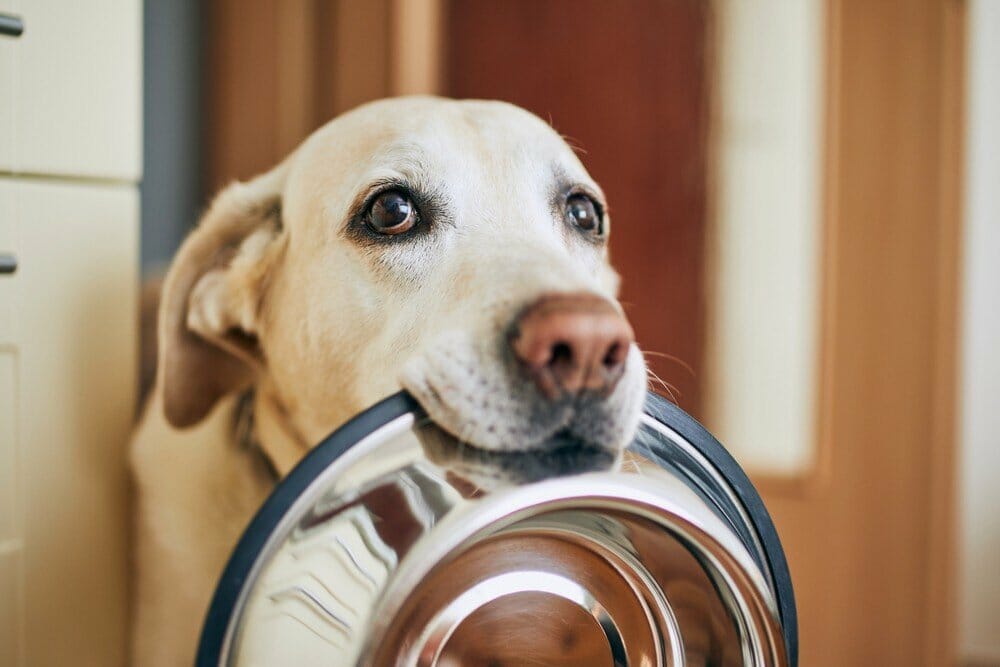
Your dog has no reason not to eat, so any extra food will quickly turn into fat. Find the appropriate recipe for your dog’s age and weight here.
To reduce the amount of fat in your dog’s body, reduce calorie intake, introduce more protein-rich foods with fewer carbs, limit unhealthy treats, and ensure they get enough exercise to increase their activity levels.


